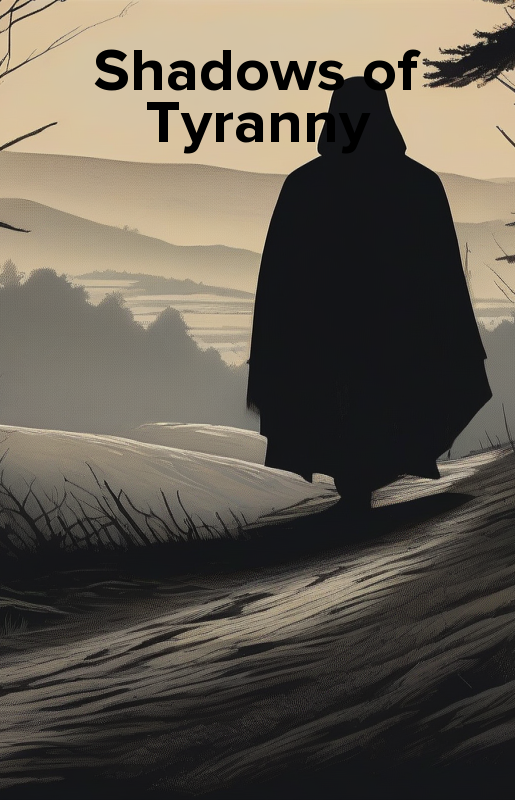Table of contents for ebook and audiobook: „Shadows of Tyranny”
Here is the translation of the provided text to English:
Gajdziński Gomułka The Dictatorship of the Shadows
Part 1: Introduction
Chapter 1: The Rise of the Dark Age
- 1.1 The Historical Context of Poland in the Late 20th Century
- 1.2 The Emergence of the Gomułka Regime
- 1.3 The Role of Gajdziński in the Early Years of the Regime
- 1.4 The Ideology of the Regime and its Impact on Society
- 1.5 The Initial Reactions of the International Community
Chapter 2: The Structure of the Regime
- 2.1 The Role of the Communist Party in the Regime
- 2.2 The Structure of the Government and its Institutions
- 2.3 The Military and its Role in Maintaining Power
- 2.4 The Secret Police and its Methods of Repression
- 2.5 The Economic System and its Impact on Society
Part 2: The Regime's Repression and Control
Chapter 3: The Suppression of Dissent
- 3.1 The Methods of Repression Used by the Regime
- 3.2 The Fate of Dissidents and their Families
- 3.3 The Impact of Repression on Society and the Economy
- 3.4 The International Community's Response to Repression
- 3.5 The Role of the Catholic Church in the Regime's Repression
Chapter 4: The Control of Information
- 4.1 The Censorship of Media and Literature
- 4.2 The Propaganda Machine and its Role in Shaping Public Opinion
- 4.3 The Use of Disinformation and Manipulation
- 4.4 The Impact of Censorship on Society and Culture
- 4.5 The International Community's Response to Censorship
Part 3: The Regime's Economic Policies
Chapter 5: The Command Economy
- 5.1 The Principles of the Command Economy
- 5.2 The Impact of the Command Economy on Industry and Agriculture
- 5.3 The Role of the State in the Economy
- 5.4 The Black Market and its Impact on the Economy
- 5.5 The International Community's Response to the Command Economy
Chapter 6: The Role of the State in the Economy
- 6.1 The State's Role in Industry and Agriculture
- 6.2 The Impact of State Control on the Economy
- 6.3 The Role of the State in Foreign Trade
- 6.4 The Impact of State Control on Society and Culture
- 6.5 The International Community's Response to State Control
Part 4: The Regime's Social Policies
Chapter 7: The Role of Women in Society
- 7.1 The Status of Women in the Regime
- 7.2 The Role of Women in the Economy
- 7.3 The Impact of the Regime on Women's Rights
- 7.4 The International Community's Response to the Regime's Policies towards Women
- 7.5 The Role of Women in the Resistance
Chapter 8: The Role of Youth in Society
- 8.1 The Status of Youth in the Regime
- 8.2 The Role of Youth in the Economy
- 8.3 The Impact of the Regime on Youth Culture
- 8.4 The International Community's Response to the Regime's Policies towards Youth
- 8.5 The Role of Youth in the Resistance
Part 5: The Fall of the Regime
Chapter 9: The Rise of Dissent
- 9.1 The Factors that Contributed to the Rise of Dissent
- 9.2 The Role of the Catholic Church in the Rise of Dissent
- 9.3 The Impact of Dissent on Society and the Economy
- 9.4 The International Community's Response to the Rise of Dissent
- 9.5 The Role of the Regime in Suppressing Dissent
Chapter 10: The Fall of the Regime
- 10.1 The Factors that Contributed to the Fall of the Regime
- 10.2 The Role of the International Community in the Fall of the Regime
- 10.3 The Impact of the Fall of the Regime on Society and the Economy
- 10.4 The Legacy of the Regime and its Impact on Modern Poland
- 10.5 The Conclusion: The Lessons of the Regime's Fall
Note: The title "The Dictatorship of the Shadows" is a translation of the Polish phrase "Dyktatura ciemniaków", which is likely a metaphorical expression referring to the regime's secretive and oppressive nature.

